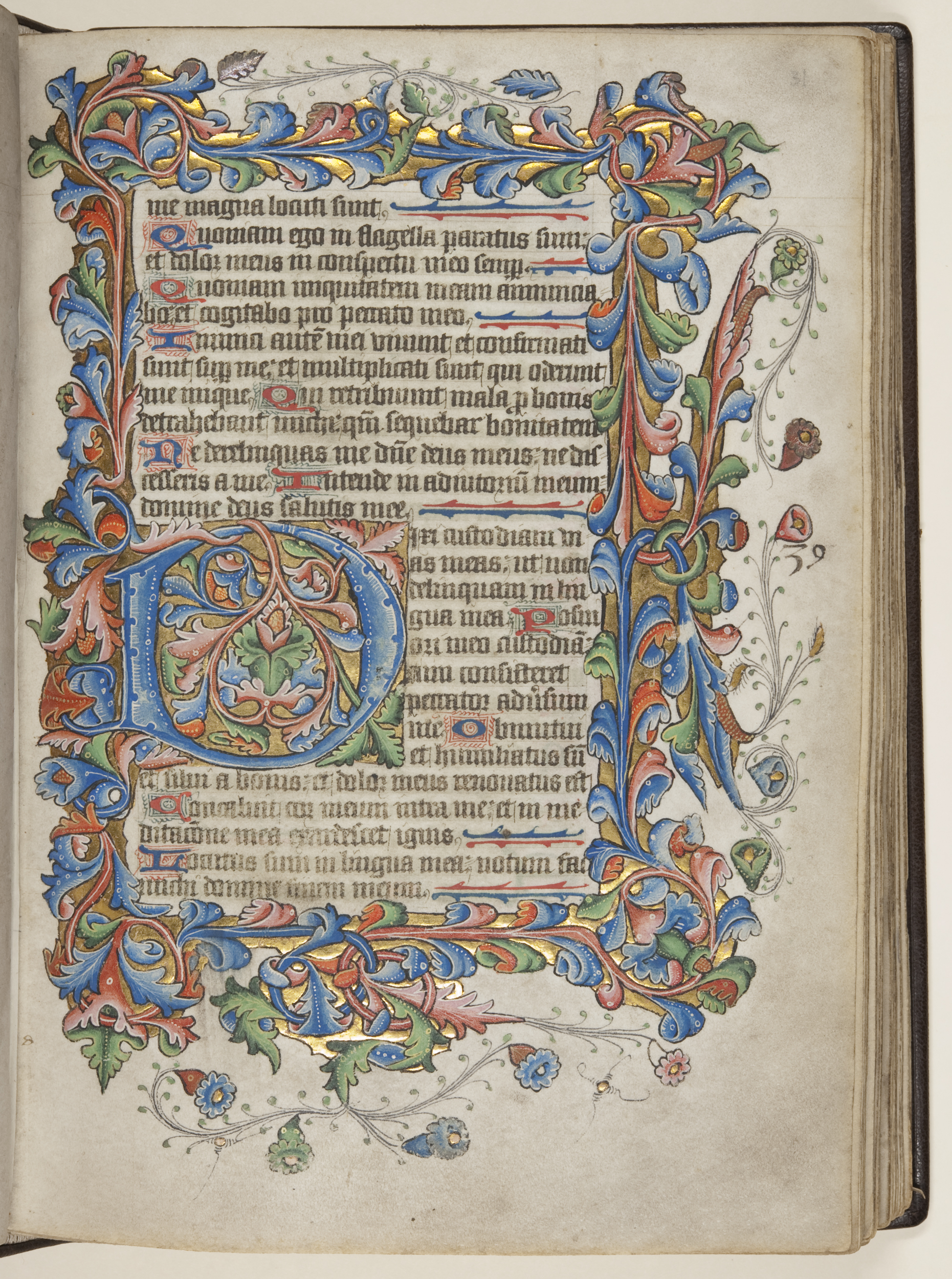52 Weeks of Inspiring Illustrations, Week 52: the St Andrews Psalter

For the final inspiring illustration of this 52-week series, it could be argued that we have saved the best for the last. This is a book of Psalms (with a liturgical calendar of Sarum (or Salisbury) use), which was written in England, probably near London, in the mid-15th century (St Andrews msBX2033.A00). It would have been commissioned as a private devotional text, and there is some evidence which suggests that it might have been produced for a member of the Senhouse family in Northern England. It has for long been known as the ‘St Andrews Psalter’, but for no good reason other than that we have owned it since at least the late 17th century, when it appears in a Library catalogue.


This is a very high grade manuscript, with well-written text and a consistently fine level of decoration of initials. Its stunning feature, however, is the extraordinarily lavish decoration of the borders of eight of the pages.

These borders correspond to the first psalms sung at Matins on each day of the week, and the first psalm sung at vespers on Sunday. Dr Julian Luxford, of St Andrews’ School of Art History (whose interpretation of the manuscript is heavily relied on for this post), describes them in the Treasures of St Andrews University Library: “from the burnished gold and lush, almost tropical, tangled of stylized foliage, human and animal figures occasionally emerge… including dragons, apes, foxes, a magpie and a man in a parti-coloured jacket.”

Luxford highlights two of the pages for more detailed attention. The yellow griffin on Psalm 109 has a scroll in its mouth bearing the motto Deo Gracias, and has a green parrot peering through the foliage – the motto and the parrot (although not the griffin) being associated with the crest of the Senhouse family. Psalm 52 is introduced with a picture of St Francis in conversation with a magpie, perhaps indicating him as an object of ridicule.


Irrespective of how we interpret the decorated pages, however, they are unarguably beautiful: this is one of the most prized items in our collections, one of the most frequently exhibited, and one of the most awe-inspiring. It deserves its place as the culmination of our Inspiring Illustrations series.
–NR
I remember one of the highlights of an art history course on medieval psalters and apocalypse manuscripts was viewing this manuscript - in fact as soon as I saw the title of this post I remembered the page with the parrot!
Reblogged this on Medieval Matters.
[…] ← 52 Weeks of Inspiring Illustrations, Week 52: the St Andrews Psalter […]
[…] Illumination based on Leaf 84 (recto) of the St. Andrews Psalter (15th century), found via this post. […]